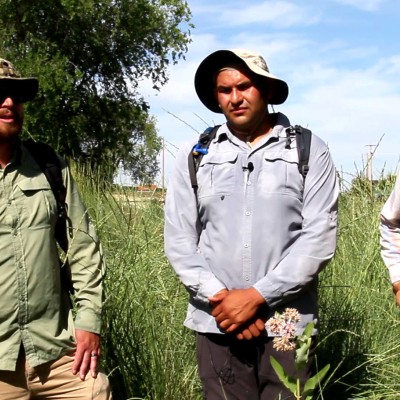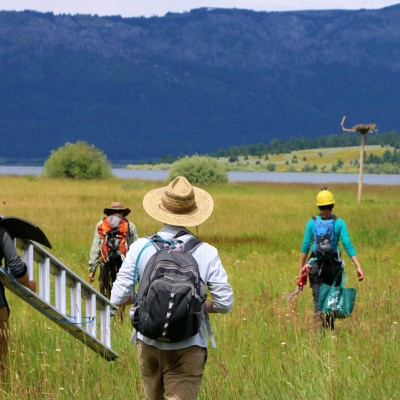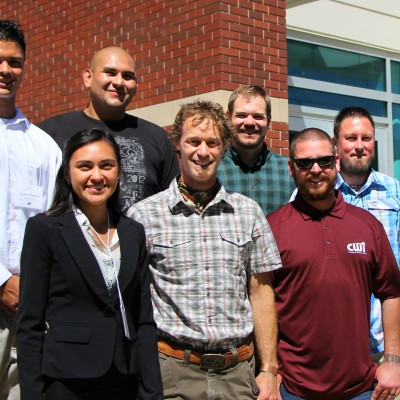For the first time in College of Western Idaho (CWI) history, the College is reaping the direct benefit of supporting students through grant-funded research projects. Thanks to Idaho EPSCoR and the National Science Foundation, seven Biology students had the opportunity to spend their summer vacations conducting field research on birds, butterflies, and freshwater mollusks. Once their research was complete, they contributed their data and findings to the greater scientific community.
Chasing Butterflies
CWI students Vance McFarland and Manny Reyes spent four to six hours a day, five days a week walking among ticks, mosquitos, and 90-plus degree days chasing butterflies in an effort to save them. Monarchs are being considered for endangered species status. They live and lay their eggs on a plant called Showy Milkweed. The research duo and their instructor, Dusty Perkins, searched for evidence that Monarchs are using two milkweed hotspots in the Treasure Valley. Much to their delight, they are. Their data will be contributed to a nationwide modeling and conservation effort. Read the full story.
Up-Close With Birds of Prey
Perkins and three students had the opportunity to get up-close and personal with birds of prey. CWI alum Ty Styhl, CWI student Andrew Dorrell, and Humboldt State University student Lizzie Meisman participated in an osprey research project. The team monitored more than 150 osprey nests from south of Cascade in Valley County to north of McCall. They checked the nests one-by-one. Each nestling they touched was weighed, measured, checked from wing-to-wing and everywhere in between, and then photographed before being replaced safely in its nest. The data they collected will be provided to Idaho’s land managers. Read the full story.
Diving Into Freshwater
CWI students Kassandra Townsend and Andrew Barrios sent their summer literally diving into freshwater. The duo conducted their research on freshwater mollusks in the Boise and Payette Rivers. They worked with Biology professor Steve Lysne to identify, sample, and preserve a number of different species. Mollusks are considered a useful indicator species—similar to osprey. They are sensitive to a number of contaminants and environmental factors. They can help monitor water quality and ecosystem health in areas impacted by humans.
Presenting Their Findings
At the end of their 10-week research experience, each student presented their work at the Idaho Summer Research Symposium held at Boise State University on Aug. 12. More than 60 students, almost all of which were first-generation college students, participated in the event along with their faculty mentors. When asked, most students said working with their mentors was the best part of their research projects. It gave them a real-world view of life after graduating.
“These opportunities really give students the hands-on experience that gives them the shot in the arm to go out and really continue their academic and professional careers,” Perkins said. “It is also an incredible opportunity to provide undergraduate research opportunities for our students, and to become an academic institution of distinction.”









